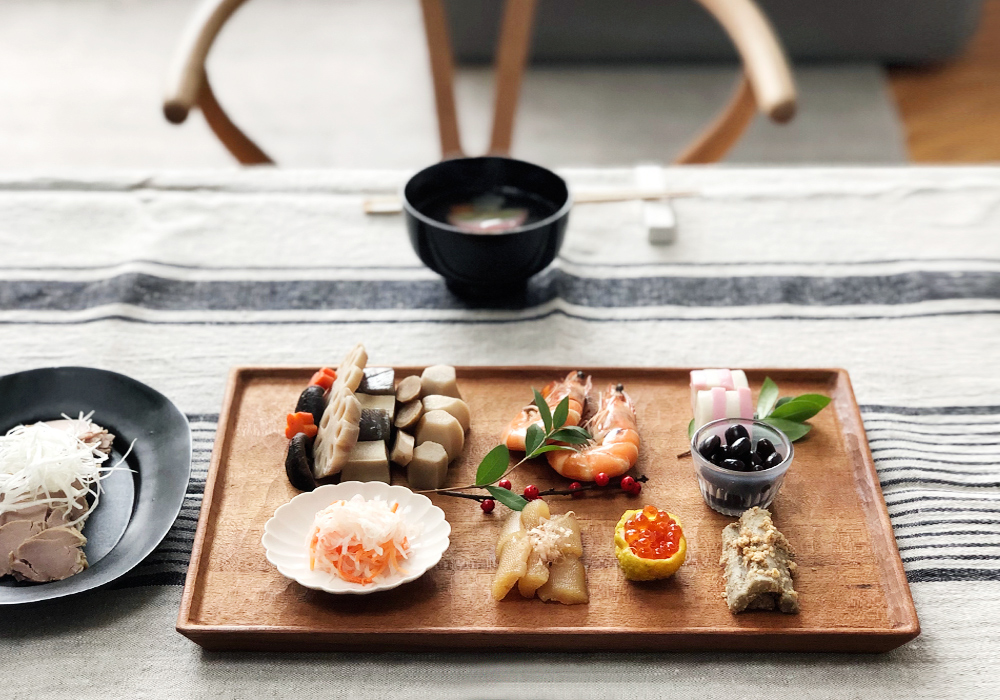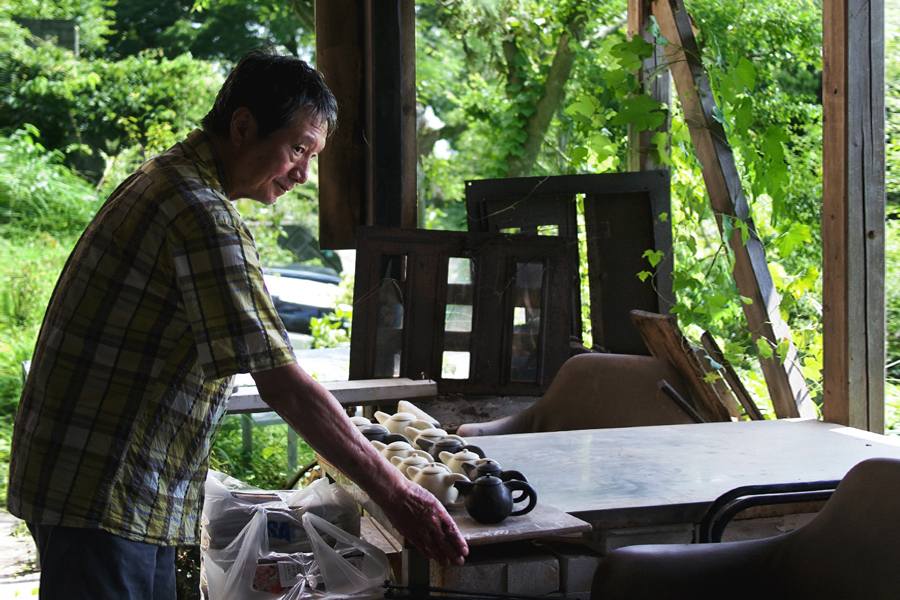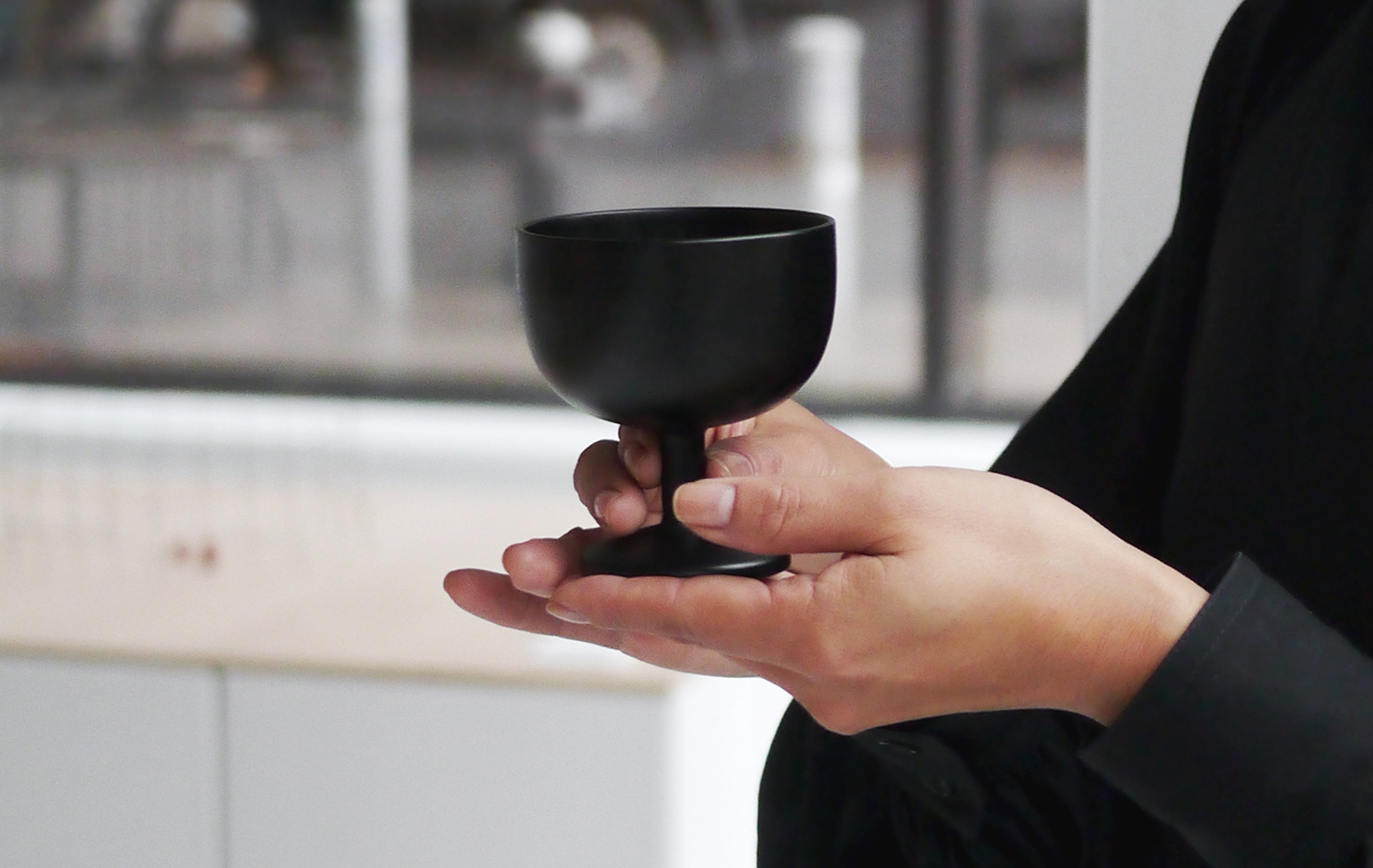New Year’s Osechi

Our year started off with new adventures into the Japanese culinary world and we couldn’t have had the opportunity without the hospitality of our good friend, Aya Nihei, who prepared a beautiful osechi meal to ring in the year. For those unfamiliar, osechi is a Japanese meal said to bring good fortunes for the year ahead. The meal is comprised of a variety of small dishes each with their own meaning. The dishes are traditionally prepared in tiered ju-bako boxes or in an arrangement of small bean dishes. We were enthralled by the experience and wanted to share what we’ve learned.
Below you can find an illustrated anatomy of a Japanese osechi meal based on some of the more common dishes.

The appearance of the food usually corresponds to the associated wish. Our favourite, for example, is Ebi No Umami, steamed shrimp to represent longevity as the curled back and long antennae resemble a bearded old man. The cutouts in lotus root slices, Su Renkon, offer clarity into the New Year. Nishime, boiled vegetables usually consisting of carrots and burdock provide nutrients and good health. The color of red and white Sashimi fish look like the Japanese flag, much in the way that Namasu, pickled daikon and carrot, are like brightly coloured celebratory strips of confetti. Kohaku Kamaboko are elliptical fish cakes cut in half that look like a sunrise on the horizon. A dried sardine dish, known as Tazukuri, symbolizes abundant harvest because the fish were once sprinkled on to rice paddies as fertilizer. When a turnip is intricately cut into the shape of a chrysanthemum, the imperial seal of Japan, it is called Kikuka Kabu, symbolic of joyous occasions such as promotions. Clusters of red fish roe, or Ikura, epitomize fertility. Datemaki, rolled omelette is said to represent scholarship and learning as it looks like a scroll. Kuri Kinton, a mashed bright yellow sweet chestnut dish, directly translates to “golden dumpling made of chestnuts.” The dish is plated in a heap that reminds many of a pile of gold signifying wealth and prosperity. Kuromame sweet beans derives from the word ‘mame’ that means hard work, leading to fortune and wealth. The stretch factor of grilled mochi in Ozoni soup, means longevity and a Yakizakana grilled fish, regardless of the type, is eaten as a prayer for a successful career. The word Daidai, a bitter citrus, means ‘from generation to generation’, and is a wish for children to pass on our traditions. Lastly, Kombu Maki, beautifully wrapped seaweed, evolves from the root word ‘yorokobu’, meaning ‘happiness’, which for all one knows, may very well be the secret to eternal youthfulness.
With that, we call upon all the Kombu Maki Gods so that no matter how many calendar years go by, we remain full of happiness… Happy New Year, everyone!
Photograph | Aya Nihei
Illustrations | Angélique Chmielewski



